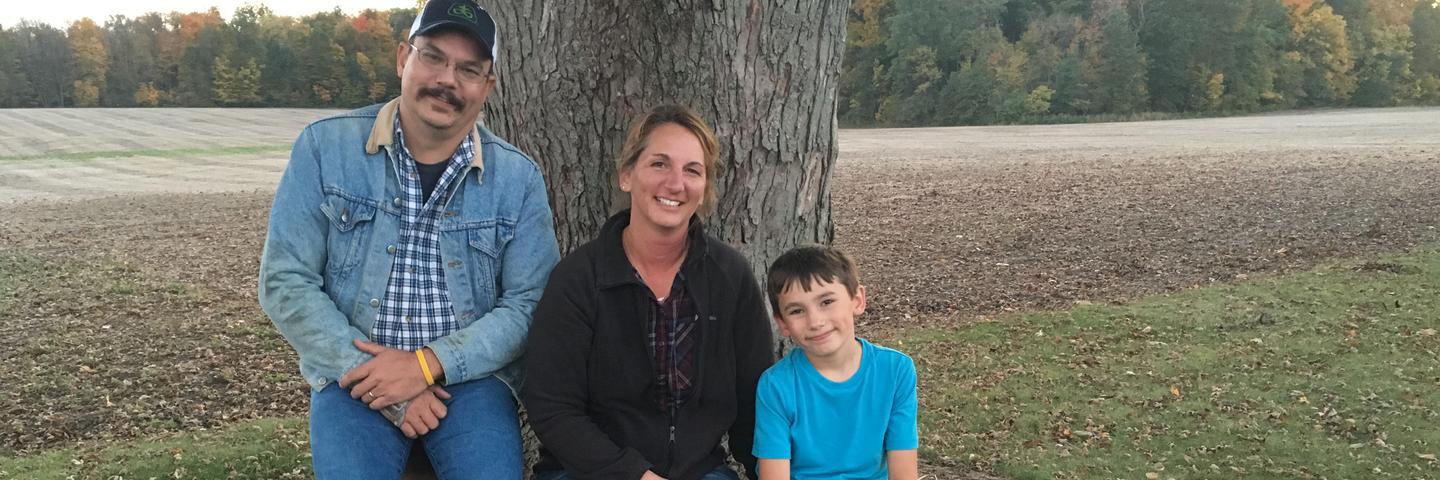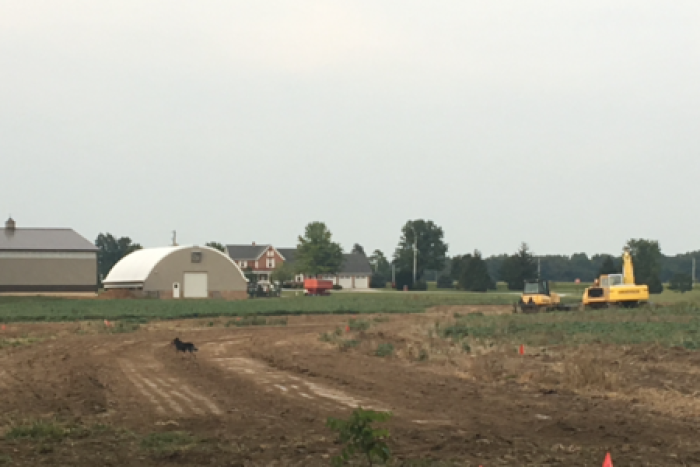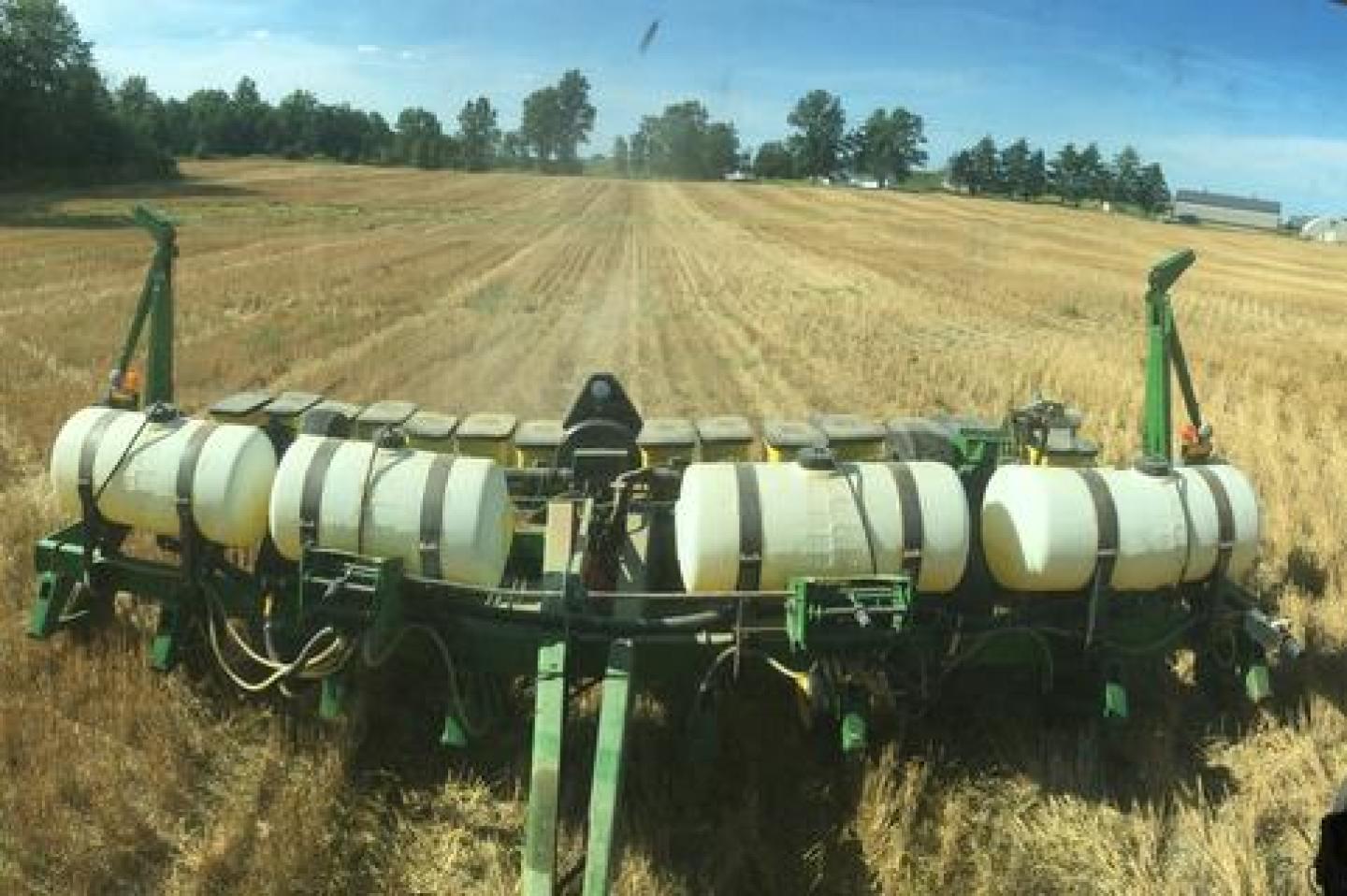Indiana Farmers are Returning to Their Roots

Wayne Trace Farms has been a lifelong dream for Traci and Jamie Bultemeier. Their dreams became a reality in 2012 when they purchased 100 acres of farmland in Adams County, but it didn’t come without its challenges.
Wayne Trace Farms has been a lifelong dream for Traci and Jamie Bultemeier. Growing up on small family farms, they were both taught the simple love of agriculture and a traditional farming lifestyle. And while life took each of them off the family farm, they both continued to dedicate their lives to agriculture through their education and careers.
After graduating with the Bachelor of Science and then a Master’s degree in agronomy, Traci from Ohio State University and Jamie from Purdue University, they both took jobs with corporate agriculture but knew they wanted to get back to farming one day.

“We really had planned on trying to start a family farm from the time we married,” said Jamie. “We worked close to ten years with a goal saving enough money to purchase our first farm and get started on our own.”
Their dreams became a reality in 2012 when they purchased 100 acres of farmland in Adams County, but it didn’t come without its challenges. Even with these challenges, they decided to jump in feet first.
“The first farm we bought had been on the market for five to seven years,” said Jamie. “Everyone who walked the farm said there were too many problems and they didn’t want to deal with it. When we walked the farm, we thought ‘man, can you imagine what this could be if somebody would fix these problems.’”
With only a small utility tractor on hand, they did what most beginning farmers do, they started building their farm operation from scratch. As conservation-minded landowners, they began by identifying resource concerns that needed to be addressed. Because the farm has a poorly managed county ditch, twenty to thirty-foot elevation changes and drains directly to one of the most critical watersheds in the Great Lakes region — the St. Mary’s river — they knew focusing on their concentrated water flow and erosion issues was a priority.
“We had an area on our farm where we were losing five to six acres every year due to erosion,” said Jamie. “And we also lost close to eight feet of farmland because the county ditch that runs adjacent to our farm had been incorrectly maintained.”
The Bultemeiers enlisted the help of their Natural Resources Conservation Service (NRCS) district conservationist to discuss their plan of action. As a result, they learned about technical and financial assistance programs that were available to them to develop and carryout a conservation plan and were able to take advantage of the Great Lakes Restoration Initiative (GLRI) funding. The Bultemeier’s desire of a farm dedicated to the stewardship of the land was becoming a reality.

“As agronomists, we understand quite a bit, but we don’t necessarily have that experience in conservation and that’s where the partnership with NRCS has been key and filled in the gaps where we needed to accomplish our goals,” said Jamie “The commitment of the staff to lend a hand and understand what our challenges are, and show us challenges we weren’t aware of, has been amazing.”
The Bultemeiers took a big first step by changing to a no-till cropping system. This has significantly reduced the amount of sediment and nutrients leaving their farm fields, reduced input costs and increased soil quality leading to better crop growth.
“Adopting no-till has actually addressed most of the erosion issues we were having on the farm,” said Jamie. “And, we are finding that the soil on this farm is actually responding better to a no-till system. We are getting much better crop emergence and stands, and our yields have continued to go up.”
In 2016 they worked with NRCS to develop a nutrient management plan that identified the right fertilizer source, the right rates to apply, the right time to apply for maximum impact, and the right place to apply in their fields. In 2017 they took the next step in their conservation plan by applying for FSA’s Conservation Reserve Program with NRCS’ technical assistance to design and install a grass waterway to fix a gully in the eroded field behind their farmstead.
The Bultemeiers are also on schedule to begin a two-stage ditch project that will drastically reduce soil erosion issues caused by the drainage ditch. Perhaps their biggest surprise in working with NRCS was to discover that their 30 acres of woodlands could be a turned into a profitable revenue builder by simply following a forestry management plan.
“The money and assistance that is available from NRCS has really been a huge benefit because it enables us to do the practices that we know are right for our farm and to be able to afford to do them the right way,” said Traci.
“Our goal is to leave the land better when we’re done with it. We want the water coming off our farms cleaner than it came on; we want the soil in better condition,” said Jamie. “This is a great, noble cause but when you’re a beginning farmer and you’re just trying to figure out how to pay the seed bill that stuff gets put on the back burner. The whole relationship with NRCS and the conservation partnership has allowed us to get a start on that.”
Future plans include improving a pasture area for their herd of sheep, incorporating cover crops into their cropping system, adding field buffers and starting a management plan for an additional farm they recently acquired.
“Everyone says you can’t start a family farm – it’s impossible, you just can’t do it,” said Jamie. “We’re finding out that it’s hard work but it’s also very doable. With the right programs, support and networks around you, you can do it.”
Additional Information
GREAT LAKES RESTORATION INITIATIVE
NRCS, through the GLRI, targets watersheds that are expected to have the greatest impacts on improving water quality. GLRI funds are targeted to these Priority Watersheds to implement avoiding, controlling and trapping practices that reduce the amount of nutrient loss from agricultural lands.
CONSERVATION RESERVE PROGRAM
The Conservation Reserve Program is a land conservation program administered by USDA’s Farm Service Agency with technical assistance provided by USDA’s Natural Resources Conservation Service.
INDIANA NRCS HOMEPAGE
For more information about NRCS programs offered in Indiana and how experts throughout the state can help you address natural resource concerns on your land, visit the Indiana NRCS homepage.

